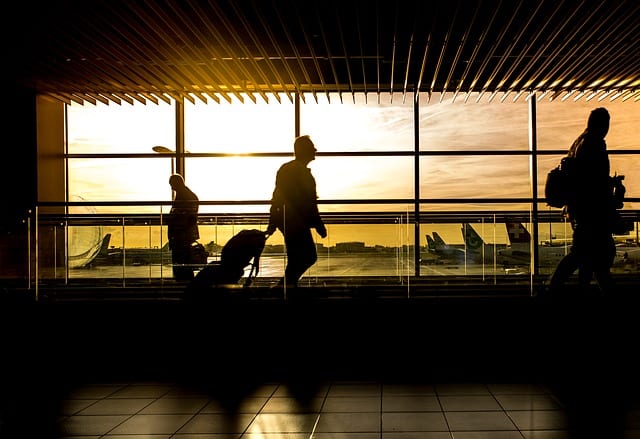What Employers Should Know About Safety In Travel

Employers face tremendous difficulties when it comes to protecting employees who travel right now. There are logistical concerns such as the rising cost of air travel, but there are also safety and security concerns. (Image Credit: Rudy and Peter Skitterians/Pixabay) Countries that might have been previously seen as safe a decade ago might be high-risk now. Employers have to keep up with the changing landscape in terms of global security and ensure their duty of care plans evolve as quickly as changing threats.
Countries currently identified as among the most high-risk for any travelers include Venezuela, Egypt, Libya, and some parts of Turkey and Mexico. Of course,these may be some of the more notable high-risk areas, but there are others as well.
So what should employers know to keep traveling employees safe?
Should You Consider Private Security?
For employees traveling to the most high-risk locations, Executive Protection specialists may be a consideration.
Employers should look for a firm with security experts that have extensive military or law enforcement experience.
Executive protection services will often include wheels-up to wheels-down protection, as well as specific protection services for high-threat situations.
What Should An Employer Do Before a Traveler Leaves?
According to the U.S. State Department, when employees travel to certain locations, there’s only so much the U.S. government can do if something does happen. Some of the things an employer should make sure are taken care of include:
- Employers should create personalized security plans for each employee based on the role of that employee and where they’ll be traveling. Consulting with a professional security company is the best way to make sure nothing is missed when creating this plan.
- Employers should create a plan of communication so that each employee can be monitored while they’re abroad, and their location can be tracked, especially while in high-risk areas.
- An employer should create a list of the resources on-the-ground that an employee can turn to for help if necessary.
- Along with using national and international guidance as far as determining the safety risk of a particular destination, establish your own risk ratings as well. This can be done with security professionals.
Enroll Employees in STEP
If your employees travel anywhere, even if it’s not particularly high-risk, you should ensure they register in STEP from the State Department. STEP stands for Smart Traveler Enrollment Program. It’s a free service, and it helps friends and family get in touch with someone abroad if there’s an emergency. It also provides participants with information about safety conditions in the country they’re in or traveling to, and it helps the U.S. Embassy be better able to contact them in the event of an emergency.

Define Response Roles
If there is an incident, your business should have a plan in place for how to respond to it. Who will respond and what will people’s roles be in that response? A response to an incident needs to happen in a timely way,so this needs to be taken into consideration when developing a response plan.
Employees should be trained in how to respond to specific situations, as should the employees who will be on the ground and may be part of the incident.
Employee Tracking and Communication
Depending on the specifics of the situation, some employers implement an employee tracking and communication system. This can integrate two-way communication and can be helpful if other primary forms of communication aren’t available.
There should be a multi-level communication plan. For example, maybe the first line of communication is the phone, and if that’s not available text and after that social media or backup apps.
Formally Train Employees
Even the best duty of care plan will be essentially meaningless if employees aren’t well-trained on the specifics and how to make sure it’s implemented properly. It’s important to integrate regular training and updates on the duty of care plans in a formalized setting.
Anyone who has a role in any area of the duty of care plan needs to be trained and regularly retrained. Employees should be familiar and knowledgeable about the specific requirements of the plan.
Many employers will go even further with their training. They will implement practice drills. The practice drills let everyone get comfortable seeing what their role will be and how they’ll carry it out.
Finally, once training and practice drills end, the employer should do a review and make recommendations that will let everyone know what they did well and where they can improve.











Leave a Reply